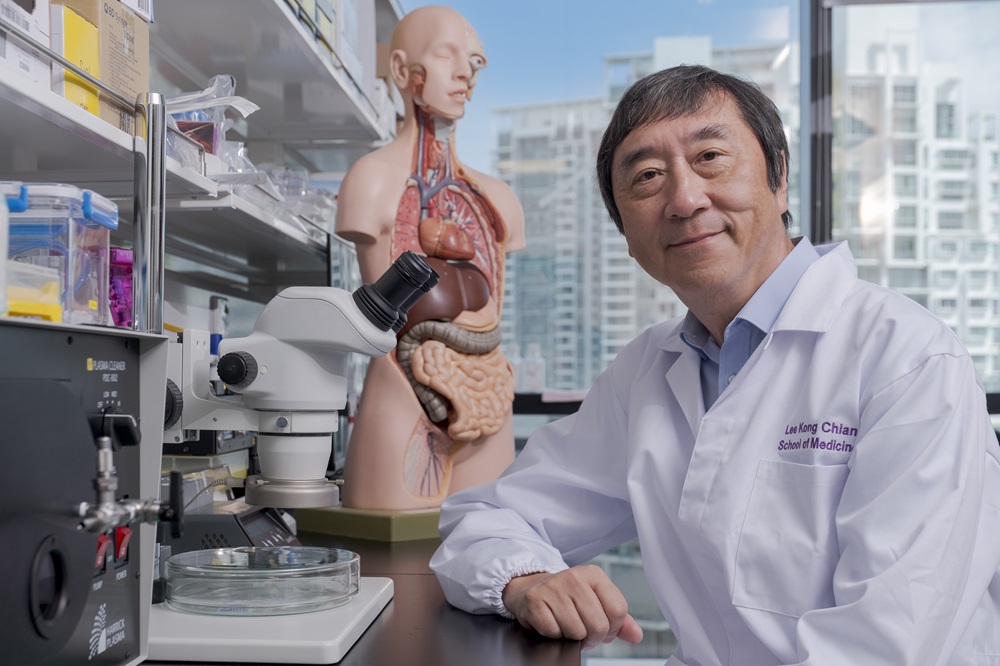The Link Between Bacteria and Stomach Cancer & it's not H. pylori: A Breakthrough Study
The human body serves as a bustling ecosystem hosting trillions of microorganisms, seamlessly coexisting within its internal environment. From the moment of birth until the final breath, these microbes are steadfast companions, yet at times, they become formidable adversaries. It's a paradoxical narrative where the story of enduring camaraderie often transforms into a life-or-death struggle when these microorganisms betray their host, unwittingly sealing their own fate.
In a groundbreaking revelation, researchers from Nanyang Technological University, Singapore (NTU Singapore) and the Chinese University of Hong Kong (CUHK) have uncovered a significant association between Streptococcus anginosus, bacteria and stomach cancer.
While traditionally known to inhabit various regions of the body including the mouth, throat, intestines, and vagina, S. anginosus has now emerged as a potential contributor to gastric malignancies.
(Image: Professor Joseph Sung, NTU Singapore’s Senior Vice President (Health and Life Sciences) and Dean of LKCMedicine, is the co-lead of the study which found that Streptococcus anginosus bacteria play a significant role in causing stomach cancer.)(Source: NTU Official website)
Published in Cell in February 2024, the study sheds light on the role of S. anginosus in instigating stomach infections in mice, resulting in cellular damage and alterations conducive to gastric cancer development.
Through meticulous experiments, the researchers demonstrated that S. anginosus induced gastric inflammation, a precursor to cancer, by irritating the stomach lining and prompting the transformation of healthy cells into cancerous ones.
Notably, the study revealed that disrupting a specific protein on the surface of S. anginosus hindered its ability to interact with stomach lining cells, thereby mitigating its contribution to gastric cancer.
This discovery opens avenues for targeted interventions aimed at reducing the risk of stomach cancer associated with S. anginosus infections.
The Study
Professor Joseph Sung, NTU’s Senior Vice President (Health and Life Sciences) and co-lead of the study, emphasized the importance of these findings in advancing our understanding of bacteria-driven gastric carcinogenesis. He underscored the implications for future clinical strategies aimed at preventing and treating gastric cancer originating from bacterial infections.
Looking ahead, Professor Yu Jun, co-lead of the study and Director of CUHK’s State Key Laboratory of Digestive Disease, expressed intentions to explore the therapeutic potential of targeting S. anginosus to mitigate gastric inflammation and lower cancer risk.
(S. anginosus (S. milleri) plated from abdominal fluid. Photo taken by Yuri E. Amatnieks, HBSc, MLT.)(Source: Research Gate article: Brosnan, Evelyn & Mody, Kabir & Zuckerman, Richard & Ruoff, Kathryn & Pipas, J. (2014). Multiorgan Streptococcus milleri Abscesses During FOLFIRINOX Chemotherapy in a Patient With Metastatic Pancreatic Cancer. Gastrointestinal cancer research : GCR. 7. 126-8. )
The study not only aligns with NTU's strategic plan for healthy living but also addresses a crucial gap in our knowledge concerning the microbial etiology of gastric cancer.
While Helicobacter pylori has long been recognized as a major culprit behind gastric ulcers and cancer, the involvement of other bacteria, including S. anginosus, has remained elusive until now.
Mouse Model
To corroborate S. anginosus's role in gastric carcinogenesis, the researchers conducted a series of experiments involving mouse models. Results demonstrated that S. anginosus induced gastric inflammation akin to that caused by H. pylori, a known carcinogen.
Moreover, co-infection with both bacteria exacerbated chronic gastric inflammation, underscoring the collaborative nature of bacterial pathogens in promoting gastric malignancies.
Furthermore, the study elucidated mechanisms by which S. anginosus fosters an environment conducive to gastric cancer progression. By altering the microbial composition of the stomach, S. anginosus disrupted the balance of beneficial bacteria, thereby facilitating tumor growth.
Importantly, the bacteria's reliance on a specific surface protein for binding to stomach lining cells unveils a potential target for therapeutic intervention.
In light of these findings, Professor Sung proposed the potential use of S. anginosus detection in fecal samples as a screening tool for assessing gastric cancer risk. Additionally, he highlighted the role of oral hygiene in preventing S. anginosus transmission to the stomach, offering a practical approach to reducing cancer susceptibility.
In essence, the study marks a significant milestone in unraveling the intricate interplay between bacterial pathogens and gastric cancer development. By delineating the role of S. anginosus in this process, the research paves the way for novel preventive and therapeutic strategies, heralding hope for the millions affected by this devastating disease.


Comments
Post a Comment